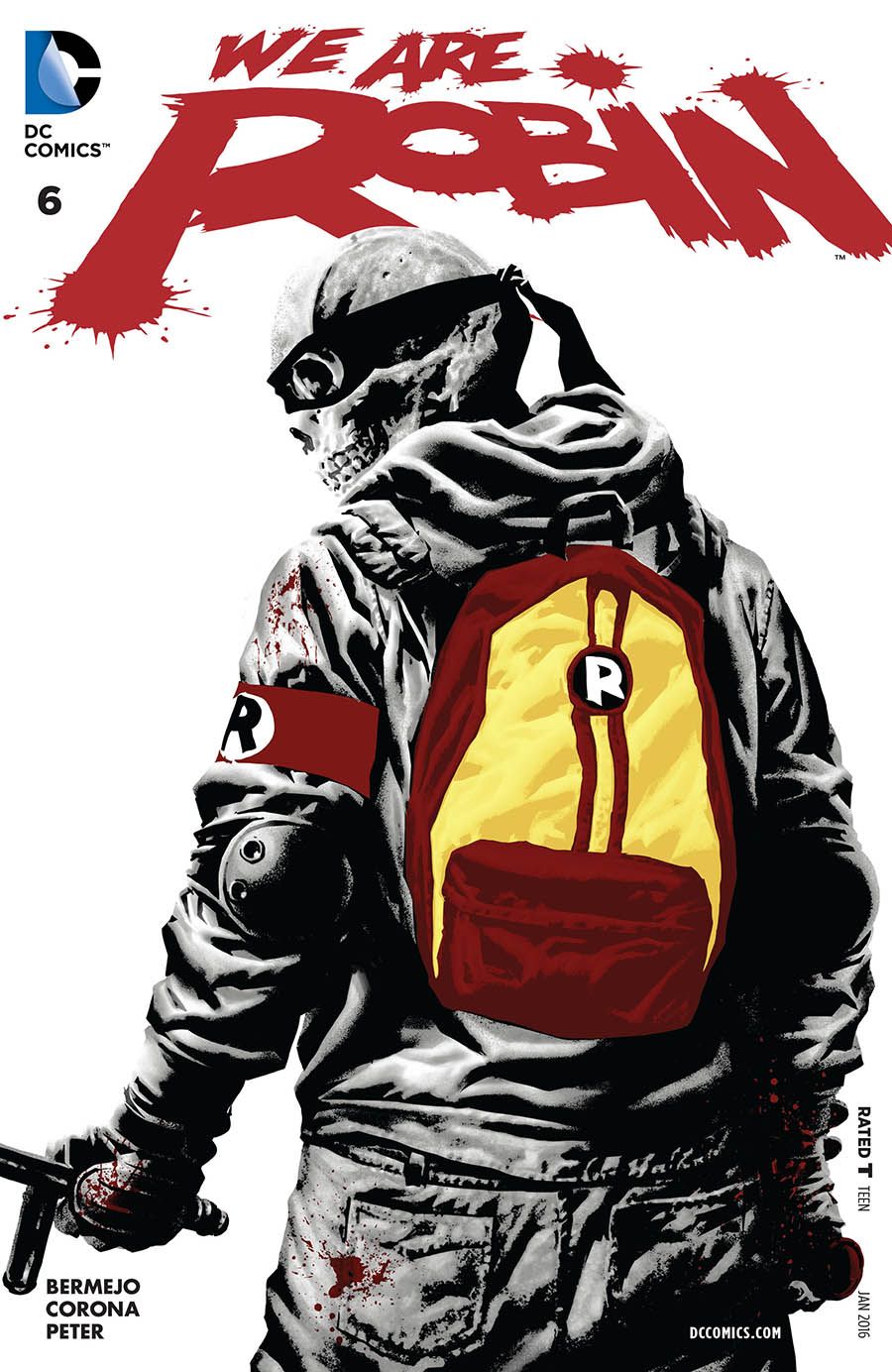When "We Are Robin" first debuted, the idea of a group of Robins working together to guard the streets of Gotham was a fun one, especially by using the Duke Thomas introduced in "Zero Year" as the audience's viewpoint character. Now that we're at "We Are Robin" #6, it's hard to keep from feeling like Lee Bermejo, Jorge Corona and Rob Haynes' series has some good ideas but isn't quite coming together on the page like it should.
The biggest problem with "We Are Robin" -- and what's now holding the series back overall -- is that none of these characters seem distinct or particularly memorable. The first issue did a great job of focusing on Duke and getting inside his head, but now no one really stands out from the pack. That's a real problem in a team book, doubly so when everyone has the same basic superhero identity. There are little moments where Bermejo clearly tries to give them all differing personalities, like when Riko tells Izzy that Robins don't kill. For now, these moments feel few and far-between, with not enough on a regular basis to make these characters stand apart from one another. Worse, even Duke has blended into the pack, making it that much more difficult to remember the personalities and backgrounds of the various Robins.
That's especially frustrating because there are story ideas here from Bermejo that are good, from the overall basic premise -- with Alfred Pennyworth secretly trying to defend the streets of Gotham by helping a new generation rise up -- to the way we're getting reactions to this month's fight via news reports. Bermejo has good concepts for "We Are Robin" but, for the moment, it feels like he could use a good co-author to help take these ideas and hew them into something a little sharper.
Corona's art (over breakdowns by Haynes) are certainly dynamic. I love a lot of the little details, like the ragged edges of the Reaper's cloak, or the angular shape of his blade with an intriguing blood pattern over it. It's a neat looking comic, and the moment where the Robins come together to attack works in no small part because of how Corona and Haynes envision it. We may know very little about these characters, but we can believe their brief moment of unity is real in how they attack in concert (even as their attempts fail). For the moment, it's the art that grabs a reader's attention.
Perhaps after "Robin War," "We Are Robin" can spend more time on the individual characters of the series and flesh them out. If Bermejo can do that, I think this book could really come together and fulfill the promise seen in the title's debut. Until that happens, "We Are Robin" is a book that's struggling to hit the mark it's aiming for.

